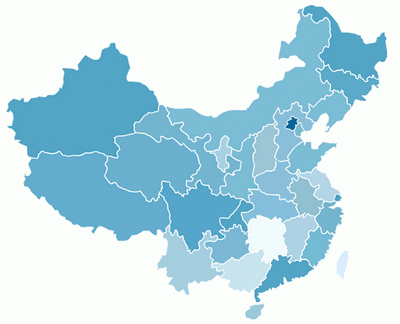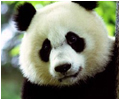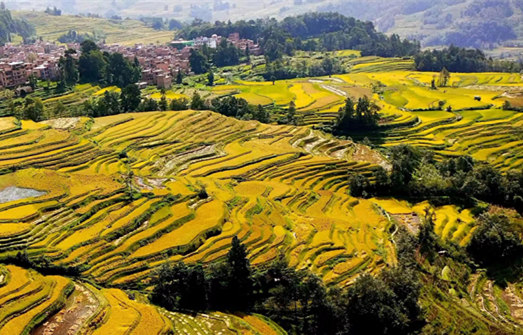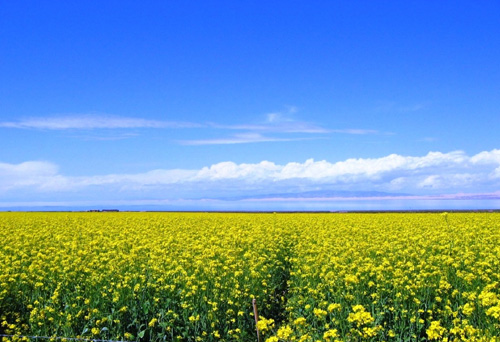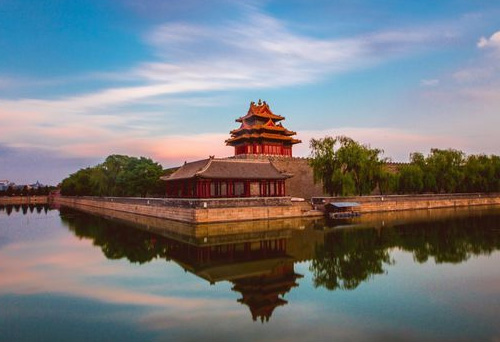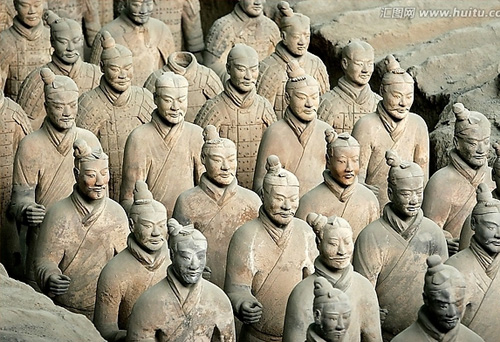The Mogao Grottoes
The Mogao Grottoes
The Mogao Grottoes
Mogao Grotto, otherwise known as "One Thouand Buddhas Cave", is situated 25 kilometers southeast of the downtown 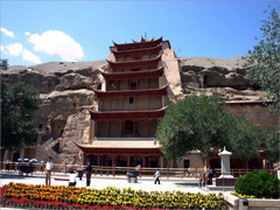 area of Dunhuang City and on the precipice of the eastern branch of Mingsha Mountain. The cave temples are like a lustrous pearl on the cliffs of mysterious Sanwei Mountain against a background of golden sand and clear blue sky. The caves are generally rectangular or square with recessed, decorated ceilings. The focal point of each is a group of brightly painted statues representing Buddha and the Bodhisattvas, Buddha's disciples. The walls and ceilings were also plastered with layers of cement and clay and then painted with watercolor. Large sections of the murals are made up of decorative patterns using motifs from nature, architecture or textiles.
area of Dunhuang City and on the precipice of the eastern branch of Mingsha Mountain. The cave temples are like a lustrous pearl on the cliffs of mysterious Sanwei Mountain against a background of golden sand and clear blue sky. The caves are generally rectangular or square with recessed, decorated ceilings. The focal point of each is a group of brightly painted statues representing Buddha and the Bodhisattvas, Buddha's disciples. The walls and ceilings were also plastered with layers of cement and clay and then painted with watercolor. Large sections of the murals are made up of decorative patterns using motifs from nature, architecture or textiles.
Admission fee:RMB100
There were originally about 1,000 Buddhist cave temples here, over 600 of which survive in recognizable form. Many are off-limits, however, either because they are not of significant interest or they contain Tantric murals considered too sexually explicit for visitors. 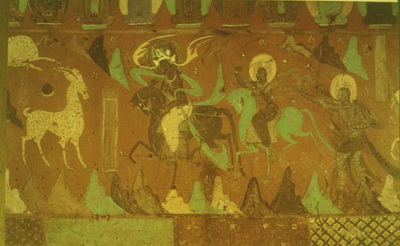
Thirty main caves are open to the public, and most visitors manage to visit no more than fifteen in a day. The caves are all clearly labeled with numbers above the doors. They are not lit inside, in order to preserve the murals, but guides carry flashlights and visitors should bring their own as well.
Northern Wei, Western Wei & Northern Zhou Caves
The earliest caves are distinctly Indian in style and iconography. All contain a central pillar, representing a stupa, which the devout would circle in prayer. Paint was derived from malachite (green), cinnabar (red) and lapis lazuli (bule), expensive minerals imported from Central Asia.
The art of this period is characterised by its attempt to depict the spirituality of those who had transcended the material world through their asceticism. The Wei statues are slim, ethereal figures with finely chiselled features and comparatively large heads. The Northern Zhou figures have ghostly white eyes. Don't be fooled by the thick, black modernist strokes - it's the oxidisation of lead in the paint, not some forerunner of Picasso.
Sui Caves
The Sui dynasty (AD 581-618) began when a general of Chinese or mixed Chinese - Tuoba origin usurped the throne of the Northern Zhou dynasty and reunited northern and southern China for the first time in 360 years.
The Sui dynasty was short-lived, and very much a transition between the Wei and Tang periods. This can be seen in the Sui caves: the graceful Indian curves in the Buddha and Bodhisattva figures start to give way to the more rigid style of Chinese sculpture.
Tang caves
During the Tang dynasty (AD 618-907), China pushed its borders westward as far as Lake Balkash in today's Lazakhstan. Trade expanded and foreign merchants and people of diverse religions steamed into the Tang capital of Chang'an.
This was the high point of the cave art at Mogao. Painting and sculpture techniques became much more refined, and some important aesthetic developments, notably the sex change (from male to female) of Guiyin and the flying apsaras, took place. The beautiful murals depicting the Buddhist Western Paradise offer rare insights into the sourt life, music, dress and architecture of Tang China.
Some 230 caves were carved during the Tang dynasty, including two impressive grottoes containing enormous, seated Buddha figures. By this time space in the caves was at a premimum and many murals were painted over existing images. The statue residing in cave 96 (believed to be represent Empress Wu Zetian, who used Buddhism to consolidate her power) is a towering 34.5m tall, making it the world's third-largest Buddha. The Buddha were carved from the top down using scaffolding, whose anchor holes are still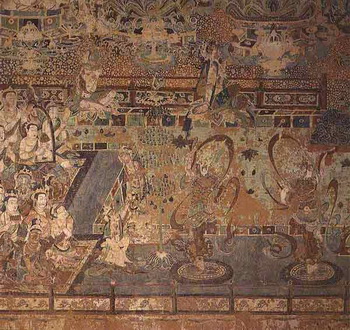 visible.
visible.
Post-tang Caves
Following the Tang dynasty, the economy around Dunhuang went into decline, and the luxury and vigour typical of Tang painting began to be replaced by simpler drawing techniques and flatter figures. The mysterious Western Xia kingdom, who controlled most of Gansu from 983 to 1227, made a number of additions to the caves ar Mogao and began to introduce Tibetan influences.


